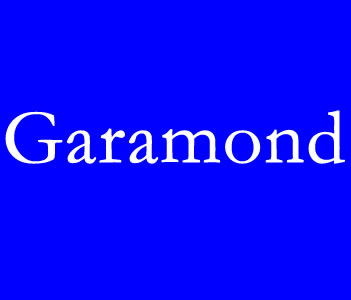
The Life of Claude Garamond
Claude Garamond was a French type designer who lived between the late 15th century and the mid-16th century. He is considered one of the most notable figures in the history of typography, having created several typefaces that are still used today. Little is known about Garamond’s early life, but it is believed that he was born in Paris in the early 1480s. He started his career as a punch cutter, creating metal punches for creating individual metal letters for printing. Later, he started designing complete typefaces, making improvements to existing designs and creating new ones. Garamond is best known for his eponymous typeface, which has become one of the most widely used and recognized typefaces in the world. The Garamond typeface is characterized by its elegant, delicate strokes, and its expert balance between the thick and thin lines. Garamond’s legacy is not just in the typefaces he created, but also in the techniques he pioneered in typography. He believed that typefaces should be designed to look like handwriting, rather than artificial shapes, and strove to achieve this in his work. He also revolutionized the way typefaces were created, introducing the concept of standardized sizes and weights for letters. Despite his immense contributions to typography, Garamond died in relative obscurity, without much recognition for his work. However, his legacy has lived on, with his typefaces still widely used today and his influence in the world of typography still felt.

The Creation of the Garamond Typeface
The creation of the Garamond typeface is a historic and significant event in the world of typography. Garamond is a classic serif font that is widely used today due to its elegant and legible appearance. The origins of the Garamond font can be traced back to Claude Garamond, a French type designer who lived in the sixteenth century. Garamond is known for his mastery in creating beautiful, distinctive, and refined typefaces. Garamond’s typefaces have served as a source of inspiration for many designers and typographers over the centuries. The Garamond typeface we know today is the result of a collaborative effort between many designers who have added their own touch to the original designs by Claude Garamond. The Garamond typeface is characterized by its clean lines, smooth curves, and sharp serifs. It is a highly legible font that is suitable for a wide range of applications, from book design to corporate branding. The Garamond typeface has stood the test of time and remains a popular choice today for its beautiful aesthetic. In conclusion, the creation of the Garamond typeface is a testament to the rich history and tradition of typography. The beauty and elegance of this font have made it an enduring classic that continues to inspire designers and typographers alike.
Adoption and Popularity of the Typeface
The adoption and popularity of a typeface are determined by various factors and can have a significant impact on its use in both digital and print media. One of the critical factors for a typeface to gain popularity is its visual appeal and aesthetic quality, which can attract designers and users alike. The distinctiveness and versatility of a typeface is also an important factor, as it can be used in a wide range of contexts and designs. Furthermore, the adoption and popularity of a typeface are also influenced by cultural and societal trends. For instance, certain typeface styles may be more popular during specific periods, such as the Art Deco style in the 1920s and 1930s. Additionally, the emergence of new technologies and design trends can also affect the adoption and popularity of a typeface. However, it is also important to note that the adoption and popularity of a typeface can be heavily influenced by commercial interests. Prominent fonts and typefaces can become industry standards and gain widespread use due to their inclusion in software packages or marketing campaigns, regardless of their aesthetic qualities or usability. Overall, the adoption and popularity of a typeface depend on a variety of factors, including its visual appeal, distinctiveness, cultural trends, and commercial viability. It is crucial for designers and users to consider these factors when selecting a typeface for their projects to ensure that it effectively communicates their message while also aligning with their design goals and objectives.
Evolution of the Typeface over the Centuries
Throughout the centuries, the typography world has undergone a significant evolution in terms of typefaces. A typeface is defined as a set of designed characters that share the same visual characteristics, such as size, weight, and style. The artistic representation of text has changed significantly since the introduction of the first typeface in the 15th century. The early typefaces were created using hand-carved wooden blocks which were labor-intensive and limited in their production abilities. The first true printing press facilitated the development of movable type, which allowed the printer to select and arrange individual metal letters to form a block of text. This innovation was a major breakthrough in typography, and it fueled the demand for new typefaces. The first typefaces were symmetrical and rigid, lacking the variety and fluidity of contemporary type. In the 18th century, advancements in printing technology gave way to more elaborate and decorative typefaces. This period is characterized by the use of thick, bold serif typefaces with intricate ornamentation, flourishes, and curlicues. These typefaces conveyed a classical and ancient aesthetic. In the 19th century, the industrial revolution brought on many improvements to the printing process, such as papermaking, ink production, and the invention of lithography. These developments allowed for the mass production of books and other printed materials. As a result, typography shifted toward simpler, more modern-looking typefaces, known as sans-serifs. These new typefaces were sans-serif, meaning they lacked the small decorative strokes at the ends of letters that were characteristic of the earlier symmetrical letterforms. Since the 20th century, typography has continued to evolve rapidly. Today, there are thousands of different typefaces available, and designers have more tools and technologies than ever before to create unique and distinctive fonts. Technological advances such as computer software, digital design tools, and web fonts have revolutionized the typography industry. In conclusion, typography has come a long way since the first wooden typefaces in the 15th century. The evolution of the typeface over the centuries has been driven by various factors, including changes in printing technology, cultural shifts, and innovative design techniques. Today, typography plays a major role in the design of everything from advertisements to logos, and the art of typography continues to evolve with modern technology.
Legacy of the Garamond Typeface
The Garamond typeface is considered one of the most elegant and sophisticated fonts ever created. It was first designed by the French type designer Claude Garamond in the 16th century and has since become a popular choice for book and magazine printing, as well as for use in other visual media. Garamond’s design was unique for its time, featuring a harmonious balance between the thickness and thinness of its strokes. This gave the typeface a sense of grace and refinement, making it popular among printers and publishers in Europe. In fact, it was often used for printing books by renowned authors such as Shakespeare and Voltaire. Over time, the Garamond typeface has been adapted and modified by various designers to suit different design needs. This has led to the creation of several variations of the original font, each with its own unique style and character. Despite these modifications, however, the legacy of the Garamond typeface remains intact. It is still widely used today in both print and digital media, and continues to be admired for its timeless elegance and sophistication. Whether used for advertising, branding, or editorial design, the Garamond typeface is a true classic that continues to captivate designers and readers alike. Its legacy is a testament to the enduring power of good design and the impact it can make on the world of visual communication.

